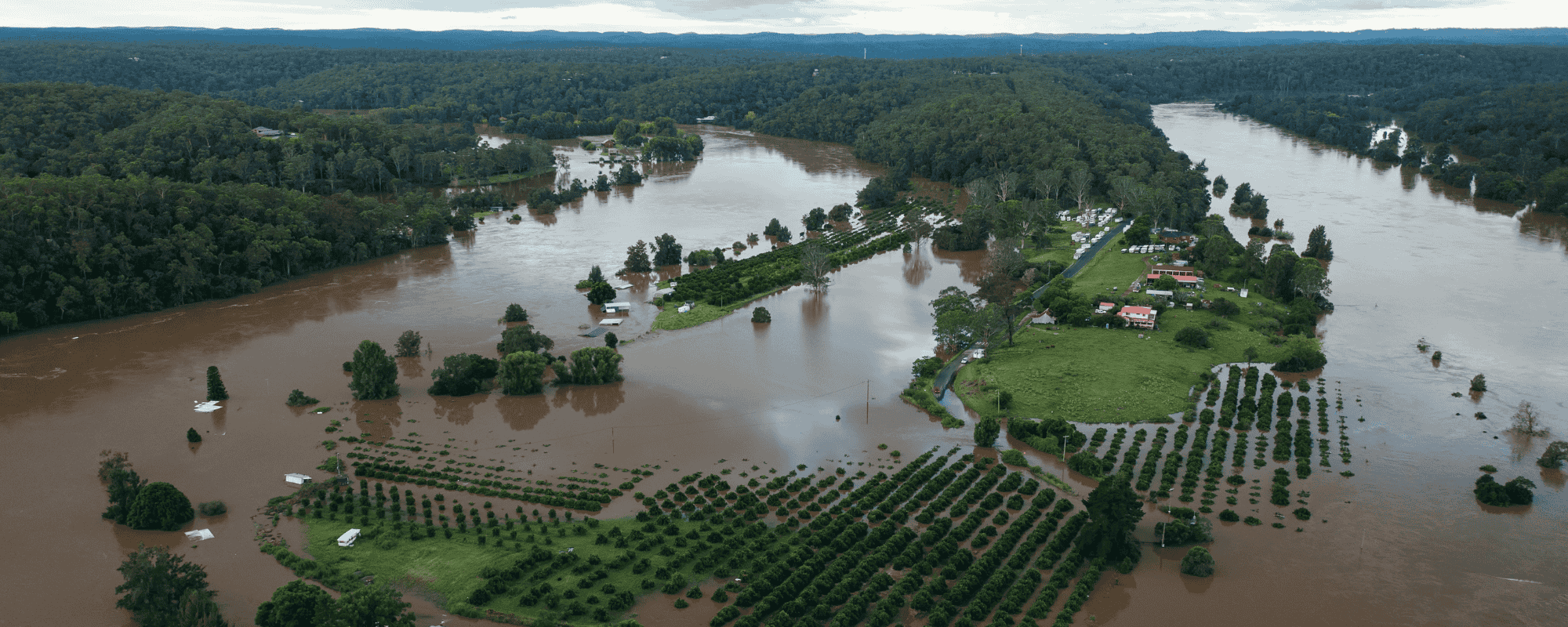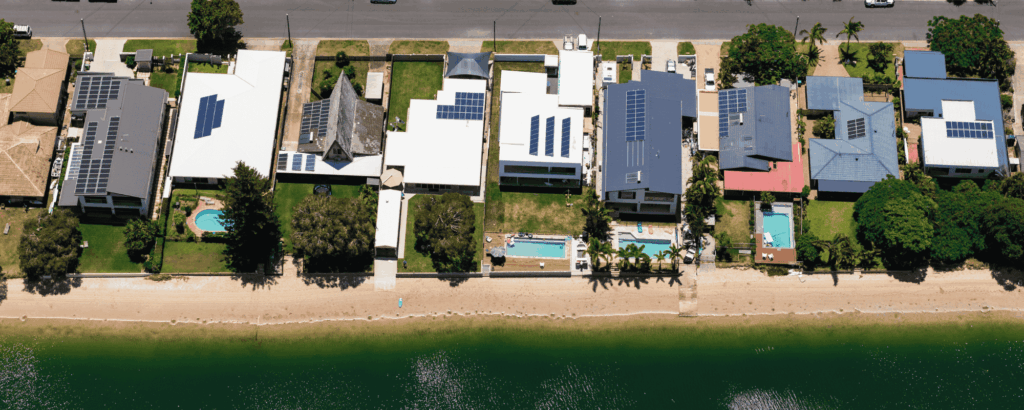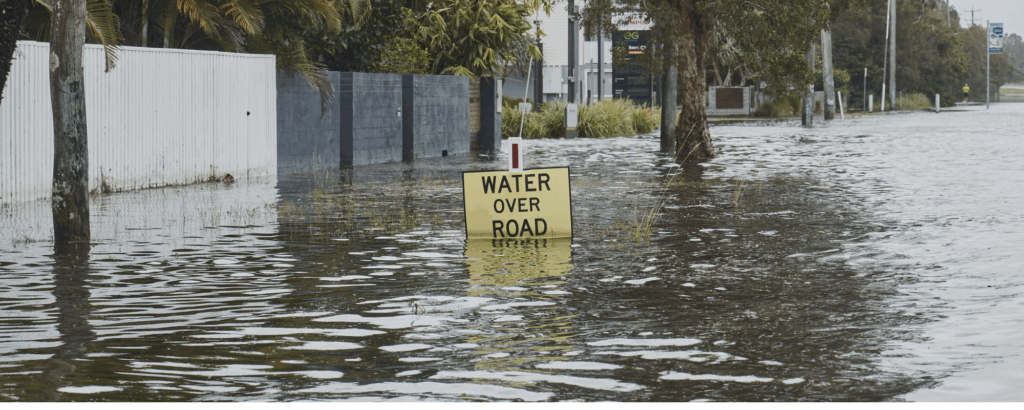You’ve probably seen images of homes destroyed by bushfires or flood water. More than 3,000 homes were destroyed in the 2019/20 Black Summer Bushfires, and in Lismore alone almost 2,000 homes were inundated by flooding in 2022.
What you may not realise is that all Australians are effectively paying a climate disaster penalty today: whether it’s sky-rocketing insurance, higher construction costs or decreasing property values.
Flood risk alone is putting a $42 billion dent in property values across the country.
Climate change is exacerbating floods and bushfires, causing more intense and frequent disasters. This is having a huge social, and emotional toll on our communities. But what’s becoming clearer is the material, financial cost we’re also wearing.
Climate risks are rising
Recently, the Australian government released a report detailing the biggest climate impacts on our country, and the risks we face unless we cut climate pollution further, and faster. So far, efforts to cut pollution from coal, oil and gas have been too meagre and slow, which means the world is on a course to heat up by 2.7ºC by the turn of the century.
Already, global heating is leading to more frequent and intense extreme weather events, causing billions of dollars worth of damage to property and infrastructure.
What’s climate change got to do with floods?
After decades of burning coal, oil and gas, climate pollution now blankets the world, trapping heat. That heat leads to more evaporation and an atmosphere that holds more moisture. As a result, flood risk has grown in Australia.
2024 was the second hottest year on record in Australia, while the annual sea surface temperature was at a record high. Higher sea surface temperatures increase evaporation and add more moisture to the atmosphere over the ocean. This extra water vapour boosts the intensity of rainfall dumped on coastal areas.
A supercharged climate, from the burning of fossil fuels, provides more energy for powerful storms and intense rainfall.
We are also experiencing more of our rain in the form of short, intense downpours, which leads to a greater risk of floods. These events occur because a warmer atmosphere holds more moisture and more energy to fuel storms.
In Australia, the latest research shows for every degree of global warming, we will experience about 7–28% more rain for hourly or shorter duration extreme rainfall events, and 2–15% more rain for daily or longer duration extreme rainfall events. This range is much higher than the 5% figures that are commonly used in existing flood planning standards that are relied on by policy makers, engineers and urban planners.
How is climate change endangering properties in Australia?
When it comes to properties, floods are Australia’s most damaging type of extreme weather.
Over the past decade, flood events made up the greatest proportion of economic damage from extreme weather in Australia, followed by tropical cyclones and droughts. Immediate impacts of floods include property damage, destruction of crops and livestock, clean up costs and emergency response.
Assess the climate risks to your home, and community using our risk map tool.
No matter where we live, the climate risks to our homes are increasing. Already, more than 650,000 properties (homes and businesses) in Australia are at high risk from one or more climate hazards, like fires and floods. That’s one in 23 properties nationally.
Climate change is reshaping Australia’s housing market
Extreme weather, exacerbated by climate change, is reshaping Australia’s housing market.
The Climate Council partnered with property data firm PropTrack to analyse what this flood risk means for the individual and collective value of our properties. We found that today, flood-prone homes in Australia are worth $42.2 billion less than they could have been without the risk of flood.
The bulk of these properties are in Queensland, where a third of properties are affected by flood risk, costing homeowners $19 billion in foregone value. The Gold Coast ranks highest within the state, with a collective $4.5 billion in value foregone across the region. NSW follows closely behind, with $14 billion loss in value.
Nationally, the largest drops in property value due to flood risk today are concentrated in lower-income areas, which is deepening economic inequality.
Meanwhile, insurance and construction costs are rapidly rising
According to the Insurance Council of Australia, the impact of extreme weather on the Australian economy has more than tripled over the past three decades – averaging $4.5 billion in claims annually throughout the 2020s.
Three events alone in 2025 generated almost $1.8 billion in claims, most of which related to extreme weather impacting housing: the North Queensland floods in February, ex-Tropical Cyclone Alfred in March, and mid-North NSW and Hunter region floods in May 2025.
Residents in some flood zones are already facing very limited insurance options, or policies that are extremely expensive. If people can’t get or afford insurance then they are more likely to underinsure, or go without. One in five people in northern Australia don’t have any home insurance, compared to 11% nationally.
Many standard insurance policies exclude coverage for the most significant climate hazards such as ‘actions of the sea’, erosion, subsidence, and certain types of flooding. There is an increased risk of insurers withdrawing entirely from the market in the most-vulnerable areas. Without access to insurance, many Australians will be unable to get a mortgage. For example, Suncorp stopped offering coverage in Roma, QLD, after floods in 2012. They only resumed coverage over a year later after construction of a levy started.
More frequent and intense extreme weather increases demand for construction workers, and materials – and that leads to higher construction costs. This is factored into rising insurance premiums, and comes on top of a national housing shortage and concern that there aren’t enough construction workers to meet existing demand for housing and repairs.
How can home buyers make informed decisions?
Assessing the risks and hazards from climate disasters such as flooding is becoming an increasingly critical factor to consider when buying property, as disasters become more frequent and severe.
Buyers may pay less for otherwise similar homes in higher risk zones – but may find they pay much higher insurance costs, or end up with major bills for home repairs and damaged contents following a disaster.
Every Australian deserves to understand the climate risks that their home and neighbourhood are already facing, as well as how those risks could rise due to worsening climate impacts like flooding.
The insurance and banking industries are already embedding these climate risks into their business decisions, but there’s limited detail available for individual homeowners.
- Our Property Value Report in partnership with PropTrack sheds light on the risk to home values due to flood risk
- Our Climate Risk Map is a free tool which provides Australians with the information they need to assess the climate risk for any property in the country. It’s an interactive map that allows you to find out the potential damage risk to properties in your local area, and see how these risks could increase over time for various levels of global heating.
- Many local governments provide public, flood mapping, like Brisbane City Council
- The Resilient Building Council brings together Australia’s leading independent experts to measurably increase community resilience to extreme weather and disasters.
- Your Home is Australia’s independent guide to designing, building or renovating homes to ensure they are energy efficient, comfortable, affordable and adaptable for the future.
- The Climate Council’s ‘Tents to Castles’ report showcases how you can make your home energy efficient and unpacks the benefits.
How can we reduce climate risks to our homes?
Australians should brace themselves for more climate impacts in the years to come. The collective steps that Australia and other nations take to cut coal, oil and gas global climate pollution further and faster will determine how many more homes are put at risk over the coming years.
Deep, rapid cuts to climate pollution and a rapid shift to renewable energy are essential to protect Australians from escalating heatwaves, floods, bushfires and other extreme events.
Sign our petition to call for stronger climate action from the government
As more properties become exposed to extreme floods, the costs of climate change will mount. We must transition from disaster response or management, to a resilience focus. We also need a climate-informed housing market, backed by clear data, with coordinated adaptation policies is essential to safeguard economic stability and vulnerable communities.










